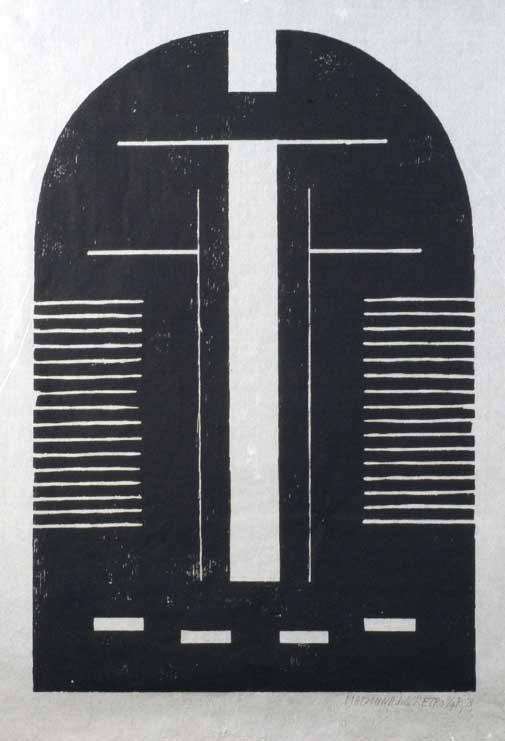- Vol. 04
- Chapter 10

The Portal
Browsing in a second-hand bookshop in the back streets of York, I notice a book which grabs my attention: 'The Portal' by Annest Gwilym. Not just because the author is my namesake, but also the unusual image on the cover: an arch painted with blackboard paint and a primitive-looking design of chalky white lines and rectangles.
I open the cover and instantly find myself transported to a large white marble hall with black onyx carved into it in mysterious linear patterns. It has doors set into the marble, which seem to stretch into infinity. On each black door, there is white writing. I glance back at the door I just entered and read on the reverse: ‘NO EXIT’. Glancing down one side of the hall, I read the words on the doors, and realise that they are the titles of some of my favourite books.
I open the door titled 'A Suitable Boy' and quickly close it: it is a live black and white scene of the stampede at the Pul Mela on the banks of the Ganges in Brahmpur. It is exactly like walking into an old film, but with the characters full size and 3D, the sounds and smells of confusion and terror fully realised.
Next I open 'Wuthering Heights' to find the dying Cathy on her bed, wild-haired, eyes rolling and incoherent, shrieking for Heathcliff. I quickly close that door too.
When I open 'The Bell Jar' I watch a girl on the roof of a tall building in New York throwing all her clothes over the edge to float down like strange jellyfish. Slam!
The Portal
Inside 'Zennor in Darkness', hoping for an encounter with D. H. Lawrence, I instead find a troubled young soldier holding a revolver to his head, and back out like lightning.
I walk past 'A Sense of an Ending' and 'To Bedlam and Part Way Back' without even a peep, and then come to a door with the name of one of my all-time favourites: 'Love in the Time of Cholera'.
The door opens to a blistering heat, and all the effervescent life of a vivid city overlooking the Caribbean. Although the colours are monochrome, they are intense here: the white more bright, the black more dark. The humid breeze carries the fragrance of tropical fruits and flowers, and an overloaded sewage system.
In a dusty park in early morning light there is a gaunt bespectacled young man in an old-fashioned black suit and frilled white shirt pretending to read from a tome of poetry as he waits for a girl in a pristine white dress with a black sash to go past on her way to school. His body is centred on stillness, but there is a wild desperation and resolve in his expression which catches at me. I step into Fermina Daza’s body and walk towards Florentino Ariza. The door clicks shut.
